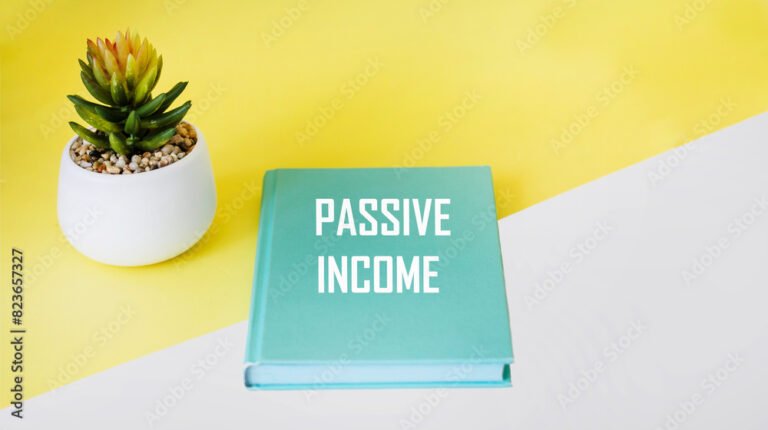
Views: 122
Introduction
Creating a budget might sound like a daunting task, but it’s a crucial step toward achieving financial stability. A budget helps you understand where your money is going, control your spending, and save for future goals. Let’s walk through some simple steps to create a budget you can actually stick to.
Understanding Your Financial Situation
Before you can create a budget, you need to understand your financial situation. Start by assessing your income and tracking your expenses.
Assessing Income
List all your sources of income, including your salary, freelance work, and any side gigs. Make sure to account for after-tax amounts to get an accurate picture of your take-home pay.
Tracking Expenses
Next, track your spending for a month. Use a notebook, spreadsheet, or an budgeting app to record every expense. This will help you identify where your money is going and highlight areas where you can cut back.
Setting Clear Financial Goals
Having clear financial goals will give you direction and motivation. Break your goals into short-term and long-term categories.
Short-term Goals
Short-term goals might include saving for a vacation, building an emergency fund, or paying off a small debt. These are goals you can achieve within a year.
Long-term Goals
Long-term goals could be buying a house, saving for retirement, or funding your child’s education. These require a longer time frame and more significant planning.
Creating a Budget Plan
Now that you know your income, expenses, and goals, it’s time to create a budget plan.
Choosing a Budgeting Method
There are various budgeting methods you can choose from. Popular ones include the envelope system, zero-based budgeting, and the 50/30/20 rule.
The 50/30/20 Rule
This simple rule suggests you allocate 50% of your income to necessities, 30% to discretionary spending, and 20% to savings and debt repayment. It’s a flexible framework that can be adjusted based on your financial situation.
Listing All Sources of Income
Make a comprehensive list of all your income sources.
Regular Income
Include your primary salary, freelance earnings, and any other regular income.
Irregular Income
Account for any irregular income such as bonuses, gifts, or side hustle earnings. Estimate these amounts based on past data if they are not consistent.
Categorizing Expenses
Categorize your expenses to understand where your money goes each month.
Fixed Expenses
Fixed expenses are regular, unchanging monthly costs like rent, mortgage, insurance, and loan payments.
Variable Expenses
Variable expenses fluctuate each month. These include groceries, utilities, transportation, and entertainment.
Discretionary Spending
Discretionary spending covers non-essential items like dining out, hobbies, and entertainment. These are the easiest areas to cut back on if needed.
Prioritizing Needs vs. Wants
To create a realistic budget, you must differentiate between needs and wants.
Identifying Necessities
Needs are essential for survival and well-being, such as housing, utilities, food, and healthcare.
Limiting Luxuries
Wants are non-essential and can be limited or eliminated to save money. Think of luxury items, dining out, and subscriptions.
Using Budgeting Tools and Apps
Budgeting tools and apps can simplify the process and help you stay organized.
Popular Budgeting Apps
Apps like Mint, YNAB (You Need A Budget), and PocketGuard are great for tracking spending and managing your budget.
Spreadsheet Templates
If you prefer a hands-on approach, use spreadsheet templates available online. They can be customized to fit your needs.
Tracking Your Spending
Consistently tracking your spending ensures you stay on budget.
Daily Tracking
Record your daily expenses to keep a close eye on your spending habits.
Weekly and Monthly Reviews
Review your budget weekly and monthly to make necessary adjustments and stay on track.
Adjusting Your Budget
Life is unpredictable, and your budget should be flexible enough to adapt to changes.
Handling Unexpected Expenses
Set aside a portion of your budget for unexpected expenses like car repairs or medical bills.
Adjusting for Income Changes
If your income changes, adjust your budget accordingly. Prioritize essential expenses and reduce discretionary spending.
Saving for Emergencies
An emergency fund is a financial safety net that everyone needs.
Building an Emergency Fund
Start by saving a small amount regularly until you have at least three to six months’ worth of living expenses.
How Much to Save
The exact amount depends on your lifestyle and expenses. Aim for an amount that would cover essential costs in case of an emergency.
Paying Down Debt
Debt can hinder your financial progress, so it’s crucial to have a plan for repayment.
Debt Repayment Strategies
Two popular strategies are the snowball method and the avalanche method. The snowball method focuses on paying off the smallest debts first, while the avalanche method targets the highest interest debts first.
Snowball vs. Avalanche Method
Choose the method that best suits your financial situation and personal preference. The key is to stay consistent with your payments.
Automating Savings and Payments
Automation makes budgeting easier by ensuring savings and payments happen without effort.
Setting Up Automatic Transfers
Set up automatic transfers to your savings account and schedule bill payments to avoid late fees.
Benefits of Automation
Automation reduces the risk of forgetting payments, helps build savings effortlessly, and can reduce financial stress.
Staying Motivated
Staying motivated is essential for sticking to your budget in the long term.
Rewarding Yourself
Set small rewards for achieving your financial goals. This could be treating yourself to a nice dinner or a small purchase.
Staying Accountable
Share your goals with a friend or family member who can help keep you accountable. Regular check-ins can keep you on track.
Conclusion
Creating a budget you can stick to is all about understanding your financial situation, setting clear goals, and consistently tracking your spending. Remember to prioritize needs over wants, use tools to simplify the process, and stay flexible with your budget. With these steps, you’ll be well on your way to financial stability.
FAQs
How do I start budgeting if I have irregular income?
Start by estimating your average monthly income based on past earnings. Prioritize essential expenses and save more during high-income months to cover lower-income periods.
What is the best budgeting app?
The best app depends on your preferences. Mint is great for beginners, YNAB is excellent for proactive budgeting, and PocketGuard helps control overspending.
How often should I review my budget?
Review your budget weekly and monthly. Weekly reviews help you stay on track, while monthly reviews allow you to make necessary adjustments.
How can I stick to my budget during holidays?
Plan ahead for holiday expenses by setting aside money throughout the year. Create a holiday budget and stick to it, prioritizing meaningful gifts and experiences.
What should I do if I overspend?
If you overspend, analyze why it happened and adjust your budget to prevent it in the future. Cut back on discretionary spending the following month to balance your budget.
Recommended Products
- Mint Budget Planner
- Keep track of your expenses with this handy budget planner.
- Mint Budget Planner on Amazon
- YNAB Budgeting App Subscription
- Get a year-long subscription to one of the best budgeting apps.
- YNAB Budgeting App on Amazon
- PocketGuard Plus Budget App Subscription
- Control your spending and save more with PocketGuard.
- PocketGuard Plus on Amazon
- Dave Ramsey’s Complete Guide to Money
- Learn from one of the best in personal finance.
- Complete Guide to Money on Amazon
- Budgeting Workbook: Finance Budget Planner
- A comprehensive workbook to track and plan your finances.
- Budgeting Workbook on Amazon




